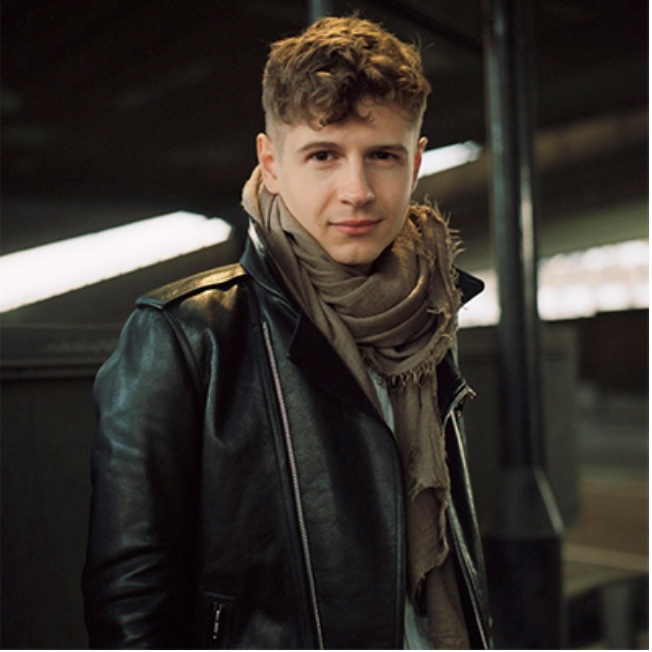by Mike Telin

On Tuesday, September 24 at 7:30 pm in Reinberger Chamber Hall at Severance Music Center, the Siberian-born, London-based pianist will perform Johann Sebastian Bach’s Aria and Thirty Variations, aka “The Goldberg Variations,” in a recital sponsored by The Cleveland Orchestra. Tickets are available online.
I caught up with the pianist in England where he was serving on the jury of the Leeds International Piano Competition. I began our conversation by asking him what it was like to move from being a competitor to a juror.
Pavel Kolesnikov: For me, it’s a very important experience because I’ve taken part in so many competitions in my youth, and overall, I found it to be a very difficult experience. So I thought it would only be fair for me to serve on the jury — to be on the other side to see the whole picture.
As you know, I benefited from eventually winning a competition and that changed the course of my career. So being on the jury is extraordinarily interesting because you see so many things that were not clear when you were on the stage and under horrible stress.
Mike Telin: The competition you won was the Honens, am I correct?
PK: Yes, in 2012, but It feels like a lifetime or two ago. Honens is a very special competition, and I think to this day, is probably the most progressive in the way the rules are created, and in the way its focus has shifted to the music-making rather than the competitiveness.
MT: We’re looking forward to having you in Cleveland. Have you been here before?
PK: No, this is going to be my first visit. And of course, it’s such an important musical city, so I can’t wait.
MT: And you’re bringing the Goldberg Variations. What an amazing piece.
PK: I’ve been on a long journey with this piece. In my childhood I listened to many recordings of it, including, of course, Glenn Gould’s. Those have become a little bit of a problem for me because they are so convincing in different ways that it is very hard to get rid of that influence — but you need to if you want to discover a piece anew.
When I was asked to collaborate on a creation of a dance piece using the Goldbergs by Belgian choreographer Anne Teresa De Keersmaeker, I thought it was an opportunity to really look at them from a new perspective. To disconnect from everything I thought about the piece and discover it again. And, of course, this is a work that makes you feel very humble, and that never goes away.
I have now played it, I don’t know how many hundreds of times, both with the dance and on my own. I’ve played it for a small circle of friends and for 5,000 people at the Royal Albert Hall. It’s always difficult in different ways, because it’s kind of a life you’re living through when you’re playing this piece — a life that never repeats itself.
MT: You recorded the Variations in 2019. Did the choreography come before or after that?
PK: I started working on the choreography before that recording. In fact, the recording is the result of a process of discovering the piece together with Anne Teresa — analyzing it and trying out different things. There are certain things about the recording that are influenced by Anne Teresa and her very analytical, very mathematical approach.
MT: I was just listening to the recording and I like it very much. What a beautiful clean touch. It sounds so healthy.
PK: It’s interesting that you mentioned the clean touch because my idea for the recording was to create a sound that is not particularly physical but is an abstract idea of sound that doesn’t possess too much weight and is something that could be born inside your mind.
And for the piano we used a Yamaha CFX prototype that has a very soft, very small sound, but is incredibly sensitive and precise. And we were micing it very closely. In some ways it is similar to Gould’s approach. But I still find that the incredible thing about his recording is the tremendous physicality of his sound that you can feel in your body. Here we were going for exactly the opposite, using similar recording techniques.
MT: I’m curious. How do you prepare yourself mentally and physically to perform the piece?
PK: There are different aspects to that. Of course — it sounds very banal — but it is very hard work. It’s the kind of work that you can’t do in a few days or a few weeks’ time. It’s a daily routine and daily exercise that you need to keep up with, because it’s one of those things you can only do one step at a time.
At the same time, playing it for an audience is a tremendous experience, because in the very first moments the piece creates an extraordinary connection with the listener. Those first notes are so magical and so familiar even to people who have never heard them before. It is something universal. It’s an amazing communal experience, and I can’t think of any piece that would compare to it.
Published on ClevelandClassical.com September 22, 2024
Click here for a printable copy of this article
Return to the Front Page.



